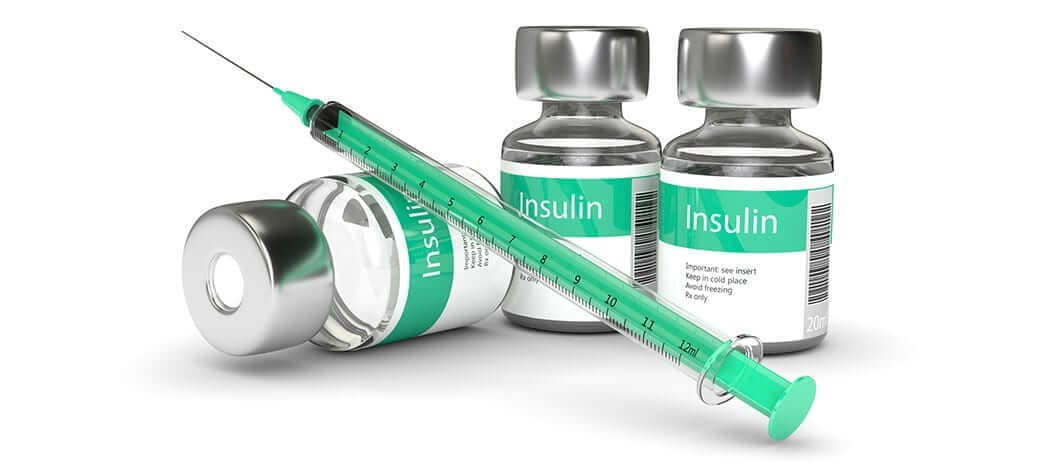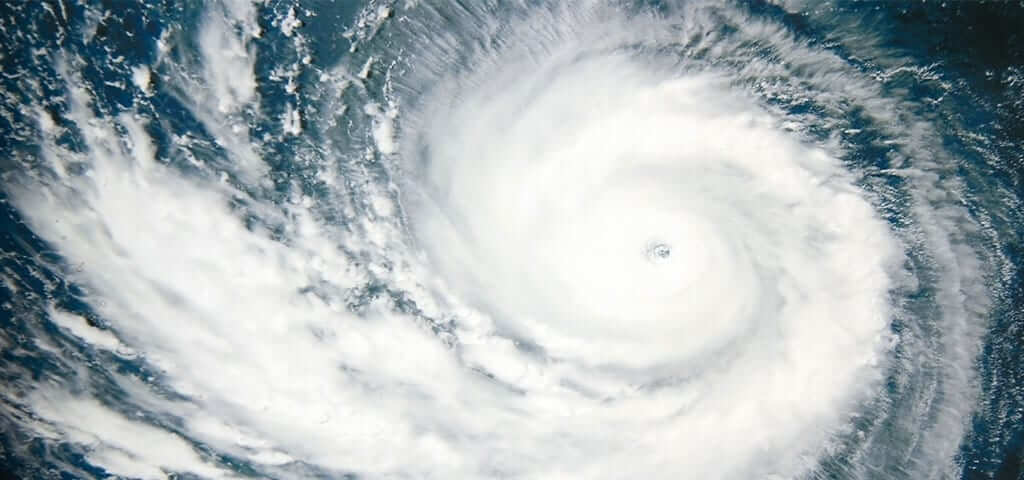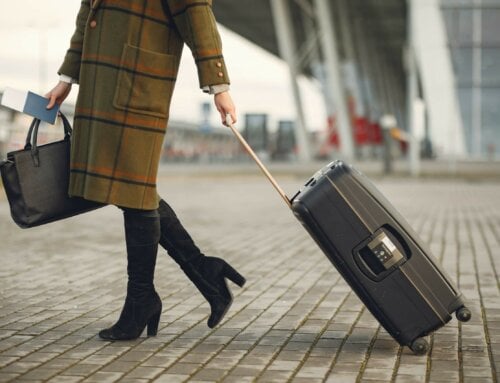Whether dealing with a hurricane, tornado, earthquake, ice storm/blizzard, volcano, wild fire or other disastrous event can be stressful for the average person. A natural disaster may affect your shelter, food supply, power supply, or road closures. When you toss diabetes into the mix, it can make it even more complicated.
Any natural disaster can have a significant effect on diabetes management, both economically and with health consequences. The most important thing is, “identify yourself as a person with diabetes” for the best outcomes and to get the proper care. Discuss any diabetes complications which affects your heart, kidneys, eyes or nerve endings to receive extra, needed care. You need to be more organized with a solid plan including managing stress, illness, injury, diabetes supplies and medications during a disaster. People with diabetes are protected under Federal law – the Americans with Disabilities Act and Section 504 of the Rehabilitation Act. Any disaster can prevent adequate and timely access to diabetes care which can alter blood sugars. Know about your local agencies and authorities to keep you informed during an emergency. Read on to find important ways to keep you safe with diabetes before, during and after the disaster. Have an action plan in place!
Have a Plan Before the Disaster
Having things in place prior to a disaster will prevent a lot of headaches down the road. Make plans even for the most unlikeliness disaster. Be familiar with your homeowner’s policy so there are no surprises later. Find out if you have wind, flood and fire coverage. Flood insurance is usually a separate policy. Look at the policy to see if there are any exclusions. Make sure to constantly update your policy since repairs, materials and content costs all continue to climb. You may even be able to reduce insurance payments by purchasing impact windows and doors. Be familiar with your local agent and make sure they understand local building codes. Notify your insurance when you change your mortgage or modify a loan. Take pictures or a video of house contents plus possessions for accuracy and documentation. Keep extra policy papers in a safe, water proof box or safety deposit box. Scan the documents to store on the cloud for easy retrieval of information.
Fill vehicle gas tanks and bring extra gas containers, if possible, to fill. Have a tool kit and spare tire in your car. Plan an emergency escape route especially if you are under mandatory evacuation. Have a plan for your pets if you must leave your home. Bring at least 2-3 days’ worth of fresh undergarments if leaving home.
Your emergency supplies kit should include:
- Large empty trash bags
- Extra batteries
- Blankets
- Sleeping bags
- Pillows
- A portable radio
- Flashlights
- Candles
- Matches
- Toilet paper
- Sunscreen with SPF30
- A wide brimmed hat
- an empty bucket
- rain gear packed
- Small, battery operated fan to keep cool (optional)
Make a personal hygiene kit and include:
- A tooth brush
- Toothpaste
- Comb or brush
- Shampoo
- Deodorant
Prepare a first aid kit and place in a waterproof, insulated, plastic box with lid. What you should include in the first aid kit:
- Alcohol wipes
- Antiseptic spray
- Tissues
- Saline nose drops
- Sugar-free throat drops
- Sugar-free cough syrup
- Antibiotic salve
- Band-aids
- Adhesive pads
- Thermometer
- Aspirin for headaches
- Acetaminophen for fever and pain
- OTC medications like Zyrtec for allergies
- Antacids
- Ice packs
- Ace bandages for injuries
Take a CPR course and get certified. Look for a first aid course as well. The FDA and CDC have specific plans in multiple languages on their web sites for emergencies during a disaster. The Red Cross and Department of Health also have listings with information. Know other sources of medical care beside your own physician such as the local hospital, local police and fire departments and any other agency which can be of help. List emergency phone numbers stored under ICE (In Case of Emergency), which the paramedics and police look for immediately. Make sure your cell phone is charged and have a back-up battery pack to charge your phone when electricity is not working. Get your immunizations up to date, especially your tetanus shot which should be updated every 10 years or after a puncture wound.
What About Food and Snack Supplies
With diabetes, you need to be prepared for both hypoglycemia and hyperglycemia. Simple lack of available food can cause hypoglycemia when taking certain diabetes medications. The first three days after a storm or other disaster seem to require the most preparation. Stock your home with non-perishables foods.
Examples of non-perishable/low sodium food items are as follows:
- Soups
- Starchy corn
- Peas
- Potatoe
- Beans
- Unstarched green beans
- Spinach
- Asparagus.
Add high protein item such as cans of:
- Tuna,
- Chicken
- Baby shrimp
- Salmon
- Sardines
Store cans of diet soda or other low-calorie drinks and keep them in order of purchase dates. Store packages of unsweetened apple sauce and fruit cocktail in its own juice in individual containers. Get instant coffee and tea bags, evaporated milk, powdered milk, artificial sweetener (if you use it), whole grain cereals and crackers, peanut butter and cheese filled crackers, low-sugar granola bars, and a variety of unsalted nuts. Get a copy of Calorie King to help you count carbohydrates from different foods eaten during an emergency. Keep dry foods and mixes in airtight containers to retain freshness. Replace or replenish emergency food supplies yearly by placing a reminder note with a date in your calendar.
Lack of food may require you to reduce diabetes medications to prevent low blood sugars. Many convenience, pre-packaged foods are high in sugar, salt and fat and should be avoided when possible. If they are your only choice, eat them in small portion size. Try to freeze ice in plastic bags before a power outage. Have extra small plastic bags to put foods into individualized serving sizes. Always have a manual can opener available. Buy disposable cups, plates, paper towels and plastic silverware to use when clean water supplies are limited. When the power goes out, start eating food in the refrigerator. Then use the food in the freezer. Next use the food in your pantry and lastly the emergency food supply. Do not allow milk or eggs to be at room temperature for more than two hours. Consider storing a small propane tank for cooking emergencies if you do not have a gas or coal grill.
Have plenty of glucose tablets and gels on hand in case of low blood sugars. Some people prefer hard candies, Smarties, regular soda, juice boxes or raisins to raise blood sugar. Just be prepared. The most important preparation is having plenty of clean drinking water ready to go. During stressful times, blood sugars can shoot up due to hormones and cause dehydration. Excess heat during power outages can also cause dehydration. Infants, children and the elderly are most affected. Symptoms of dehydration include dry mouth and tongue, extreme thirst, fatigue, dizziness, confusion, less urination and dark colored urine. Bottled water has a long shelf life, normally at least one year, but do put purchase dates on them and rotate them as you add more inventory: First in, First out. According to Fema (Federal Emergency Management Agency), “You should store a 2-week supply of water per person. This translates to a gallon a day, since 3/4 of a gallon is used for drinking and 1/4 is used for hygiene or cooking”.
Caring for Your Feet
Diabetes can affect blood flow and nerve sensation, neuropathy, in your feet. Diabetes is the leading cause of non-traumatic amputations in the US. Puncture wounds from walking barefoot allow bacteria to enter your body which can start an abscess. You should be extra cautious during times of emergency to avoid any injuries or foot complications. Do not walk in contaminated water and never go barefoot, either indoors or outside. Wear high, rubber boots when walking outside in excess water. Always wear closed toe, supportive shoes to avoid injuries from debris. Use comfortable, white socks without seams with a wide upper band to avoid problems and protect you from the inner edges of your shoe. Have a supply of at least one weeks’ worth of clean, dry socks. Notice if your feet are swelling due to the heat and elevate them whenever possible. Get professional help with new blisters, callouses, cuts or ingrown toenails before the storm. Keep up with toenail trims so you are ready.
Medications Including Insulin

Add emergency phone numbers and an emergency contact, especially if you live alone. Put names and phone numbers of friends and loved ones who live out of town. Have a list of all phone numbers of your physicians and pharmacies in the container. Wear an emergency ID indicating you have diabetes, take blood thinners or have heart issues. If you take insulin, you need to know it can’t be stored over 86 degrees unless you are out of options. Insulin will lose its potency the longer it is exposed in extreme temperatures of heat or cold. Avoid putting insulin in direct sunlight, freezing it or allowing it to directly touch ice. Get reusable gel ice, not dry ice, to store unopened insulin. Once it is opened, it can stay at room temperature up to 86 degrees according to all three manufacturers. Purchase a Frio insulin wallet which is activated with just water to keep insulin cool. Do not switch to different kinds of insulin without consulting a health care provider since rapid-acting, short-acting and long-acting are used differently.
Insulin pumps require additional information for storage. Insulin in your pump infusion set (reservoir, tubing, catheters) should be discarded after 48 hours. You need to have extra reservoirs, infusion sets, adhesive and adhesive remover when using a pump. If you have a CGM (Continuous Glucose Monitor), you will need extra sensors and a charging cord. Make sure you have at least two weeks’ worth supply of insulin syringes or insulin pen needles depending on how you take your insulin. Have a thick, plastic, travel-sized sharps container for needle and syringe disposal. Make sure to have a ketone testing kit to check for ketones in your urine during times of high blood sugar. The strips that are individually wrapped in foil will last longer. Ask your doctor if you should keep a glucagon kit for low blood sugars. Have Glucerna bars and Extend bars for snacking. Keep glucose tablets and a few cans of regular soda available, when taking insulin, in case of hypoglycemia. A site created by ACE (American College of Endocrinologists) has an emergency plan with a convenient checklist for people with diabetes when disasters hit.
Diabetes Meter Supplies
During an emergency, you should have at least 2 weeks of diabetes meter supplies including strips, lancets, a lancet device, hand gel or alcohol wipes when clean water is not available. You should also have extra batteries specific for the meter and a small, heavy, plastic container for proper lancet, test strip, and syringe/needle disposal. Check expiration dates on bottles of strips. Include control solution which will help you know if your strips are still good as strips do not work with exposure to heat, humidity or water. Keep an extra pen and log book to document blood sugars especially when you can’t use a computer spreadsheet during power outages.
After the Storm
Finally the storm is over, but you still need to avoid injuries. Stay away from downed power lines, standing water and make sure to report any existing problems. Be alert for burning smells, especially electrical damage. If you do decide to clean up outside, wear heavy rubber gloves, googles, socks, and work boots, preferably with steel tip toes. Pushing, carrying and lifting heavy loads can increase your risk of dehydration and low blood sugars. Take frequent breaks, drink plenty of water, wear a hat and sunscreen and eat appropriate snacks and meals for energy. Do not drive unless necessary since traffic lights may be out for a while. Always treat intersections as 4 way stops. Whatever type of disaster occurred, make sure the workers helping with repairs are reliable, bonded and insured. Look for price gauging, which is very common after a storm. Check with FEMA about how to properly dispose of hazardous waste and medical waste. Call 911 for a true emergency. Contact the Red Cross which may be able to furnish supplies or medication to you during a crisis.
Being well prepared during any disaster is even more important when you have diabetes. It can save your life during a crisis. Put together a complete emergency plan along with supplies and store them. When and if the time comes, you can grab them right away. Minimize your stress which will help your blood sugars and be ready for any crisis!
Have a question or comment? Then post below, no registration required. I would love to hear from you!
NOTE: Consult your Doctor first to make sure my recommendations fit your special health needs.








Leave A Comment